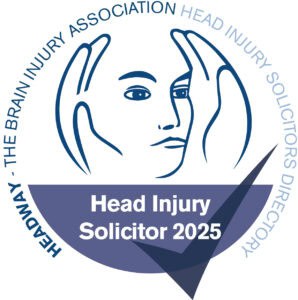
How graduated licences could reduce young driver accidents
Road traffic collisions are the biggest killer of young people aged 15 to 29 worldwide, so it makes sense that safety campaigners are urgently calling for graduated driving licences to be introduced.
A Parliamentary debate on 28 January 2025 highlighted strong evidence suggesting GDLs could cut the rate of accidents and save lives but, unfortunately, the Government decided not to move forward with proposals.
The shocking stats on young drivers and road traffic accidents
Every day, five people lose their lives on our roads, and nearly 80 more suffer serious injuries. In 2024 alone, 29,540 people were killed or seriously injured in road accidents – that’s a staggering number.
Young drivers (aged 17-24) are particularly vulnerable. Last year, young drivers accounted for only 6% of licence holders in Britan, yet they represented 18% of all car drivers killed or seriously injured. These young drivers are at an increased risk of suffering severe injuries, including brain injuries, which can have life-altering consequences.
Another alarming statistic that came to light during the recent Parliamentary debate is young people are more likely to be involved in crashes causing multiple injuries and those that involve a greater number of people.
These statistics highlight the increased vulnerability and risk associated with young and inexperienced drivers.
Why are young drivers most at risk?
One in five drivers will crash within their first year of passing their test and young drivers are the most at risk.
According to the road safety charity, Brake, factors such as ongoing brain development, overconfidence, and an inability to properly assess hazards contribute to the increased likelihood of serious accidents among young drivers.
Young drivers are still learning how to respond to situations on the road, and their brains are still developing the ability to assess risk and make sound decisions. This makes them more likely to take impulsive actions behind the wheel, increasing the chances of a crash and, in many cases, the risk of serious brain injuries.
Graduated driving licences: A missed opportunity?
In response to these statistics, the UK Government has considered various measures to enhance road safety among young drivers.
One such measure is the introduction of GDLs, which impose certain restrictions on new drivers to allow them to gain experience more gradually. As drivers accumulate experience and show they can drive responsibly, they gain more freedom behind the wheel.
The goal of the GDL system is to lower the number of accidents involving young drivers by limiting risky behaviours. Some of the measures could include:
- A minimum learning period before taking the test
- Limits on the number of passengers young drivers can carry
- Restrictions on driving at night
- Lower drink-driving and speed limits
- Lower engine size/power restrictions
- Mandatory use of ‘P’ plates for a specified period after passing the test
Globally, GDL systems have shown positive results. In New Zealand, introducing GDL cut car crash injuries by 23% for 15–19-year-olds and 12% for 20–24-year-olds. Similar systems in places like Ireland, Australia, and several US states have also helped reduce fatalities among young drivers and passengers.
In May 2024, MP Kim Leadbeater put forward a Ten-Minute Rule Bill for GDLs, and it wasn’t opposed. However, despite this early progress, the Government ultimately decided against introducing GDLs in February 2025.
It seems public opinion favours introduction of GDLs. Research by Brake and AXA UK shows almost two-thirds (63%) of those surveyed support a phased licensing system for young and new drivers.
While the official position remains unchanged, discussions continue among road safety experts and advocacy groups, suggesting the debate over GDLs’ potential role in the UK is far from over.
The importance of prevention
Road traffic collisions are a major cause of acquired brain injuries in children and young people.
Car accidents can change a young person’s life in an instant, especially when they result in a serious brain injury. I’ve seen young people struggle with memory loss, personality changes, and physical challenges they never expected to face—all because of one crash.
These injuries can affect their relationships, their education, and their ability to pursue their dreams.
That’s why proven measures like GDLs could make such a difference, helping to reduce these devastating accidents and giving new drivers time to build experience safely.
By limiting exposure to risky driving situations early on, GDLs can help prevent crashes that lead to catastrophic injuries like brain damage. While no system can prevent every crash, taking steps to improve road safety can spare families the heartbreak of life-altering injuries.








